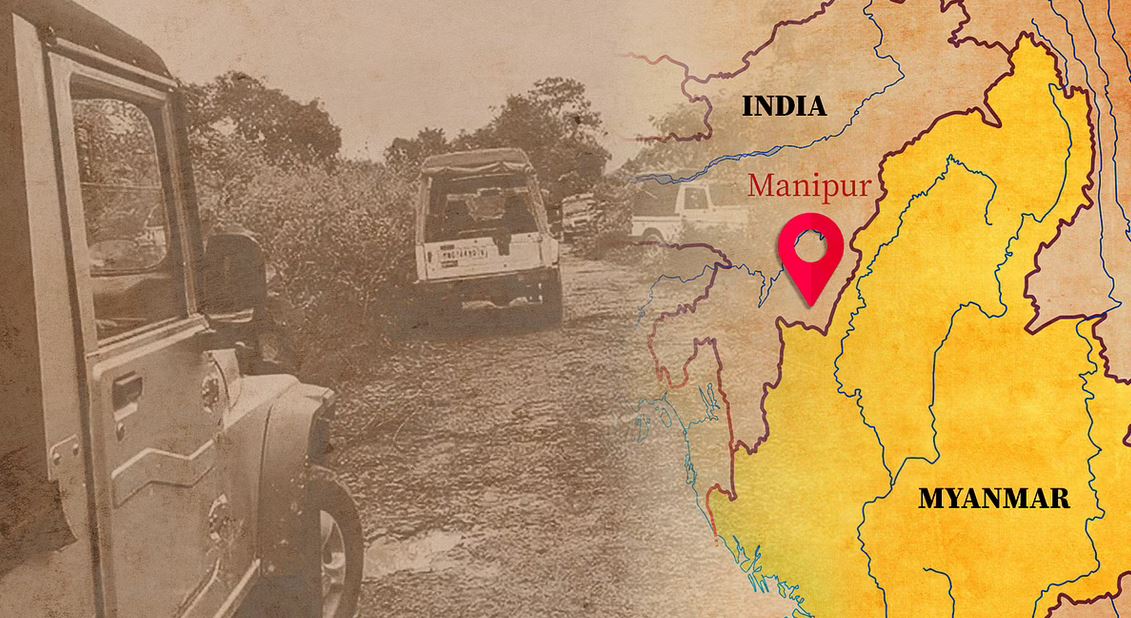The history of the Kuki insurgency in Manipur
- Just before the first of the two phases of the Assembly Elections went underway in Manipur, all insurgent groups associated with the Kuki tribes in Manipur said they will vote for a particular political party.
Who are the Kukis?
- The Kukis are an ethnic group including multiple tribes originally inhabiting the North-Eastern states of India such as Manipur, Mizoram and Assam; parts of Burma (now Myanmar), and Sylhet district and Chittagong hill tracts of Bangladesh.
- While Kuki is not a term coined by the ethnic group itself, the tribes associated with it came to be generically called Kuki under colonial rule.
- In Manipur, the various Kuki tribes, living mainly in the hills, currently make up 30% of the total 28.5 lakh population of the State.
Their ethnicity
- The rest of the population of Manipur is made up mainly of two other ethnic groups — the Meiteis or non-tribal, Vaishnavite Hindus who live in the valley region of Manipur, and the Naga tribes, historically at loggerheads with the Kukis, also living in the hilly areas of the State.
What led to the Kuki insurgencies in Manipur?
- The Kuki insurgent groups have been under Suspension of Operation (SoO) since 2005, when they signed an agreement for the same with the Indian Army.
- 2008: the groups entered a tripartite agreement with the State government of Manipur and the UPA led Central government to temporarily suspend their operations and give political dialogue a chance.
- Manipur, formerly a princely state including parts of Burma, made the accession into India after Independence, but was only made a full-fledged State in 1972.
- The resentment over the “forceful” inclusion into India and delay in granting statehood led to the rise of various insurgent movements.
- The problem was intensified after Manipur was declared a ‘distubed area’ in 1980, under the Armed Forces Special Powers Act (AFSPA), which gives sweeping powers to the military and has led to excesses.
- Post-independence insurgent movements in Manipur, carried out by valley-based groups or Meiteis, can be traced back to around the 1960s, when various groups demanded self-determination and separate statehood for Manipur, inspired by left ideology.
Roots of the insurgency
- The roots of Kuki militancy lie in conflicts of ethnic identity.
- Demand for self-determination solely for groups belonging to their ethnic fabric
- The second reason for insurgency lies in the inter-community conflicts between the Kukis and the Nagas in Manipur.
- The community could not shed internal differences between tribes and take a single line of action.
- While some militant Kuki outfits demanded Kukiland, including parts which are not in India, some demanded Kukiland within India.
- The Kuki-Naga conflict was started over securing identity and land as some Kuki inhabited areas coincided with Naga inhabited areas.
- Wanting to dominate trade and cultural activities in those areas the two communities often engaged in violent standoffs, with villages being torched, civilians killed and so on.
- Even though clashes have reduced in recent decades, tensions between the two ethnic groups still exist.
Where do the Kukis stand today?
- The temporary SoO agreements were made to start political dialogue about giving some form of self-determination to the Kukis, but that has not happened, both under the UPA or NDA governments.
- The SoO has been extended by the Government almost every year since 2008, with Kuki outfits threatening to breach the agreement by taking up arms again and boycotting the Government.
- The SoO agreement was last extended by current government last year
- It has to be seen how the current government plans to resolve the insurgency and settle Kuki political aspirations as the more than 50% Meitei population of the State, has always been against Kuki and Naga demands for self-determination, as they fear it would undermine Manipur’s territorial integrity.


